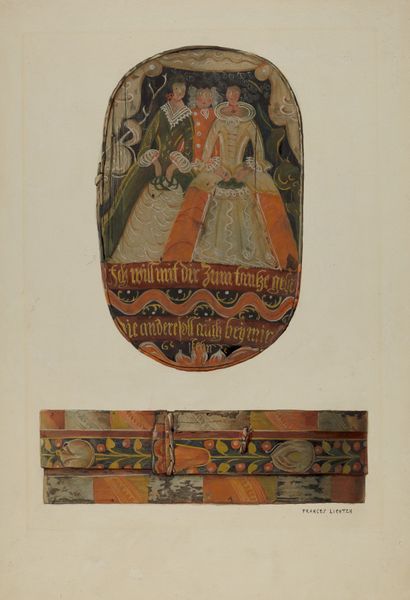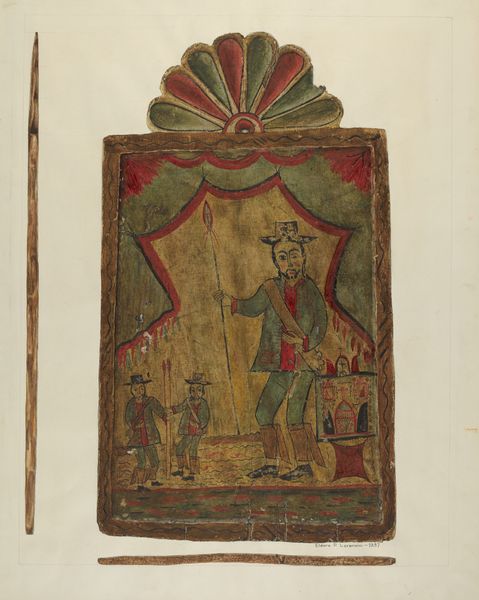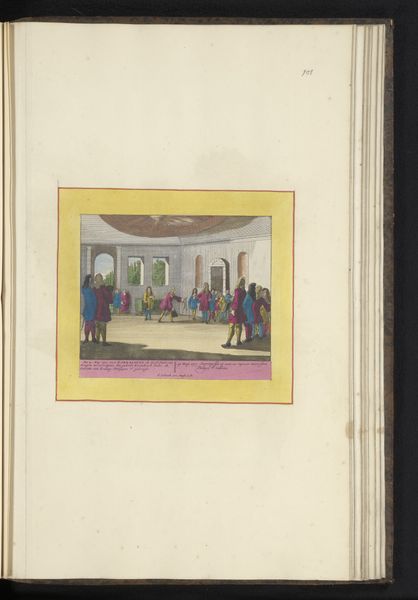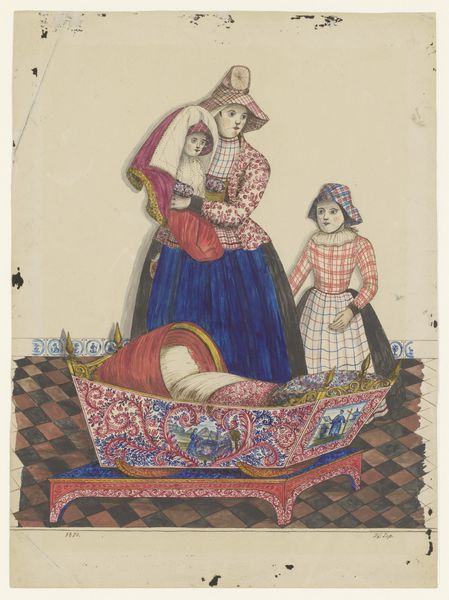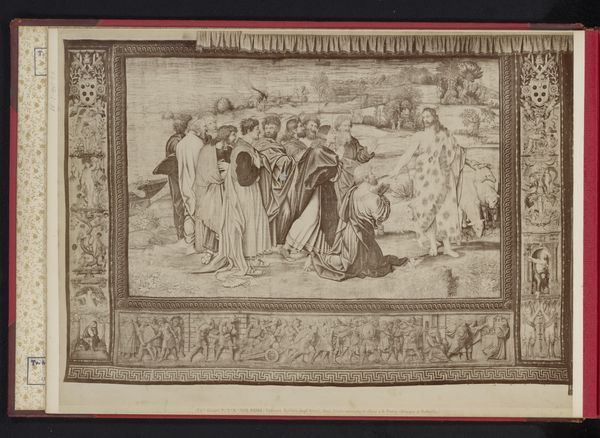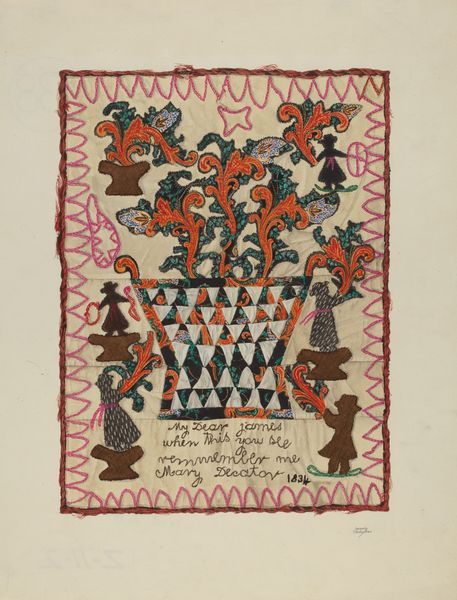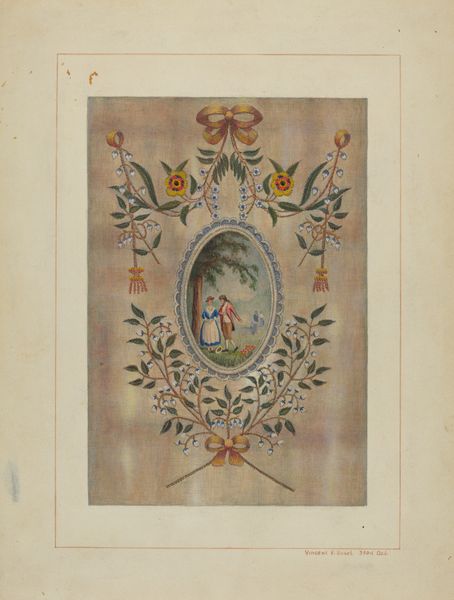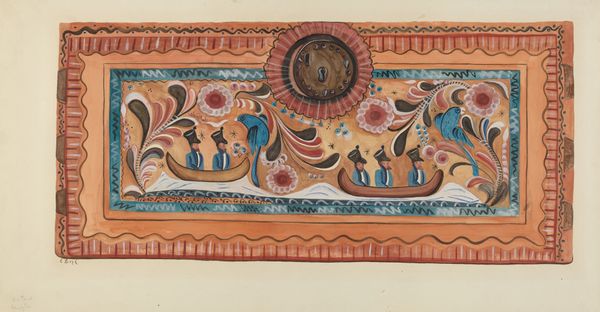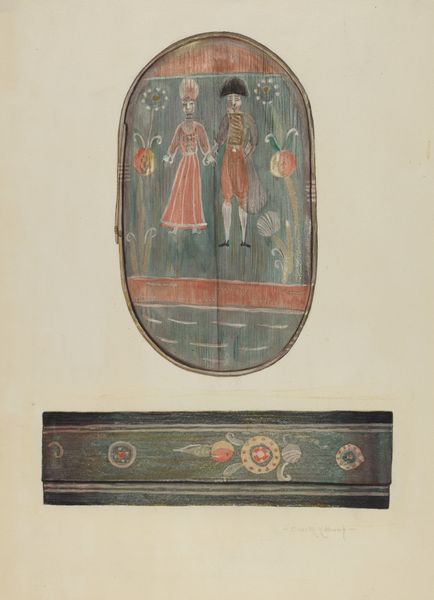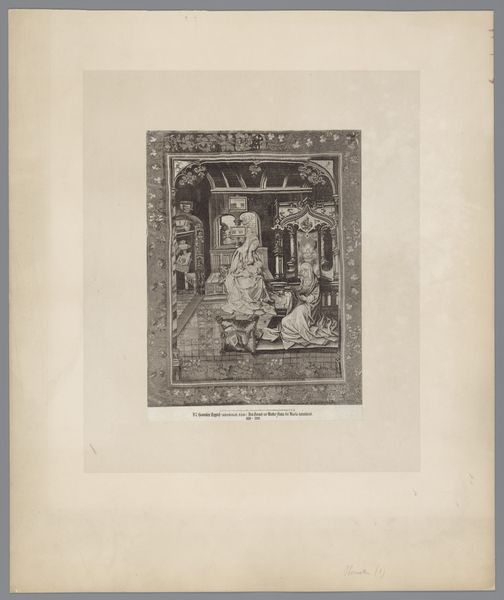
drawing, coloured-pencil, watercolor
#
drawing
#
coloured-pencil
#
water colours
#
oil painting
#
watercolor
#
coloured pencil
#
folk-art
#
watercolour illustration
#
watercolor
Dimensions: overall: 40.8 x 35.8 cm (16 1/16 x 14 1/8 in.) Original IAD Object: 19" long; 11 3/4" wide
Copyright: National Gallery of Art: CC0 1.0
Editor: Here we have Eugene Miller's "Pa. German Hat Box," created around 1938, rendered in watercolor and coloured pencil. The style reminds me of traditional Pennsylvania Dutch folk art – it's so decorative and full of symbolism, but I'm curious about its place within that tradition. What catches your eye when you look at this piece? Curator: What I find interesting is how this piece navigates the line between authentic folk expression and revivalist sentiment. The Pennsylvania Dutch tradition, by the 1930s, was experiencing a resurgence of interest, often shaped by outside perceptions. Miller’s piece, therefore, isn't just reflecting folk traditions; it’s participating in a cultural dialogue about heritage. Consider the composition – do you think this arrangement of figures and symbols reinforces or challenges existing stereotypes about Pennsylvania Dutch culture? Editor: That's a really interesting point! I hadn't considered the "outsider looking in" aspect. I suppose the somewhat formal depiction of the figures, along with the inscription, feels a bit more staged than spontaneous. Could this suggest a self-conscious effort to present a particular image of Pennsylvania Dutch identity? Curator: Exactly. The presence of what looks like a Pennsylvania German saying adds another layer. We need to ask ourselves if the work intends to communicate the group’s values or package an identity for consumption. How does this potential “packaging” affect our understanding of the work? Does it authenticate or commodify the cultural traditions represented? Editor: This really highlights how art doesn't exist in a vacuum; it's constantly shaped by social forces and historical context. I never thought about folk art revivals being mediated by those forces. Curator: Precisely. It reminds us that cultural preservation isn't a neutral act, but often a negotiation between past and present, authenticity and representation. Editor: I definitely see this piece with new eyes. Thanks, this has given me so much to consider about the cultural life of art. Curator: Likewise. It’s through these dialogues that we truly uncover the richness within what may seem like a simple image.
Comments
No comments
Be the first to comment and join the conversation on the ultimate creative platform.
